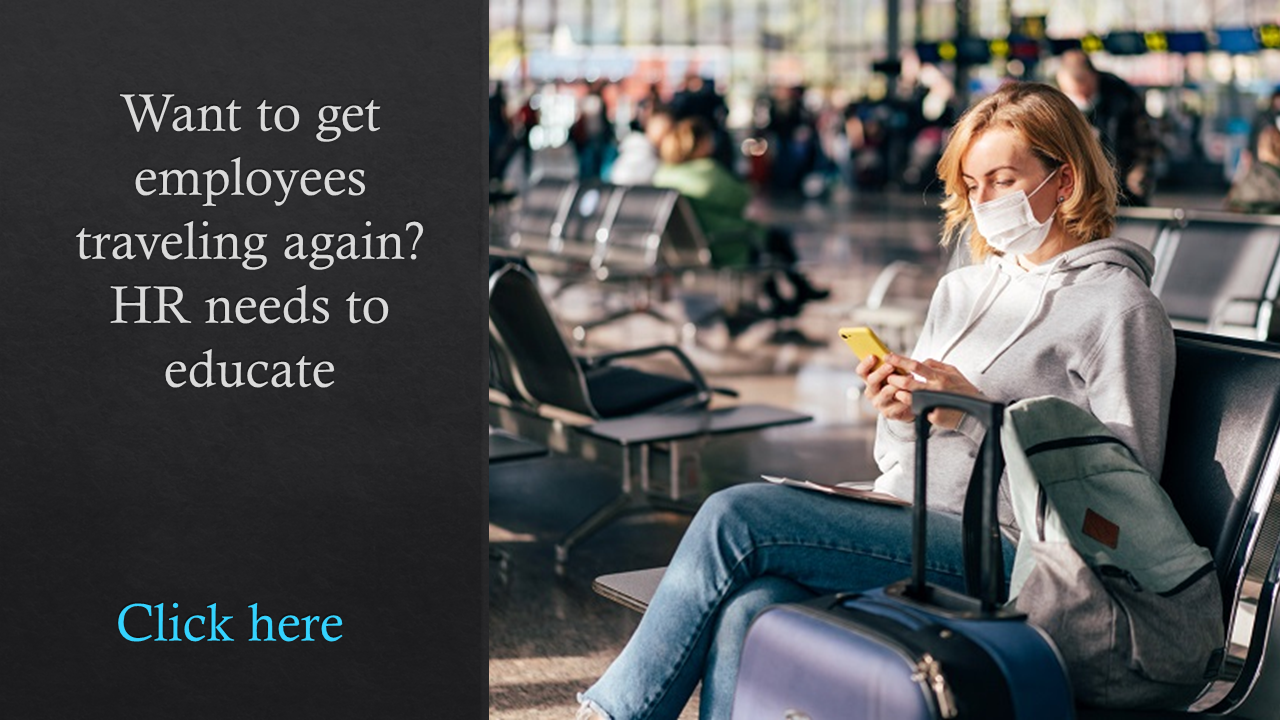By now, we know that COVID-19 vaccines are the best way to accelerate our path to the new normal. But knowing this doesn’t eliminate anyone’s worries. In fact, according to a recent survey, 31% of U.S. adults say they will not get vaccinated when the COVID-19 vaccines are available to them. What is the biggest driver behind this choice? Sixty-four percent of this group cite concern about potential side effects as their top deterrent from getting vaccinated.

Author Jessy Ceruto
With the Biden administration expecting enough COVID-19 vaccines for the entire adult population of the U.S. by the end of May, it is quickly becoming critical to address and overcome vaccine hesitancy. As trusted providers of information, employers can play a pivotal role in spurring vaccine adoption and moving the country toward herd immunity. Leveraging data, incentives and multi-channel communications, employers can help educate employees on vaccine eligibility, safety and local rollouts and motivate them to get vaccinated.
Related:Get the latest on how employers are managing COVID vaccines here.
Here are steps employers can take to drive vaccinations:
Analyze who may be vaccine-hesitant and why
Predictive models can identify specific social and environmental factors that may diminish a person’s likelihood to get immunized. These insights can be used to personalize outreach and conduct timely interventions. As the pandemic has strongly illustrated, social determinants of health (SDoH), or factors that affect an individual’s health outside of the clinical setting, play a significant role in an individual’s health risk and outcomes. These same factors must also be considered in order to develop the most effective educational and awareness COVID-19 vaccine campaigns.
With the help of predictive models and SDoH data and insights, employers can easily identify high-risk individuals and communicate the ever-changing local healthcare guidelines using the most effective communications channels. They can also proactively target typically medication non-compliant individuals who may forget to schedule their appointment for their second dose or are likely to miss it.
Create barrier-breaking messaging
Only 10% of survey respondents say their employers are a source for COVID-19 vaccine information despite the fact that 58% want their employer to share more on the topic. The demand is there, and it’s important for employers to meet it. Companies should aim to develop messaging that builds comfort and decreases fear of side effects and the unknown among their workforce. By having employers–a known, trusted and humanized source of information–share COVID-19 vaccine education, employees may be more open to accepting and acting on guidance.
 Communications to employees about the COVID-19 vaccines should encourage them to reflect on their personal “why.” Whatever the reason, everyone has their own ending to the sentence, “I chose to get vaccinated because …” For some, it may be the ability to hug their parents and grandparents again, while for others it may be something as seemingly simple as going to concerts, and for still others, it may be returning to the office and restoring a sense of normalcy in their routine. Employers’ messaging should remind each employee why getting vaccinated and returning to normal is important to them. Leveraging messaging that connects on a personal level and prompts employees to reflect on their personal “because” can transform their outlook on vaccinations.
Communications to employees about the COVID-19 vaccines should encourage them to reflect on their personal “why.” Whatever the reason, everyone has their own ending to the sentence, “I chose to get vaccinated because …” For some, it may be the ability to hug their parents and grandparents again, while for others it may be something as seemingly simple as going to concerts, and for still others, it may be returning to the office and restoring a sense of normalcy in their routine. Employers’ messaging should remind each employee why getting vaccinated and returning to normal is important to them. Leveraging messaging that connects on a personal level and prompts employees to reflect on their personal “because” can transform their outlook on vaccinations.
Find creative ways to drive and reward action
One of the simplest, yet most effective, ways that employers can drive vaccinations without a mandate is by offering incentives. Pairing a well-executed communications strategy with a quality incentive can be the final push hesitant employees need to get vaccinated.
Related: Still weighing vaccine incentives? Here’s what 12 employers have done
Some companies are offering paid time off to employees who have successfully completed their vaccine series. Other incentives include gift cards upon receiving all recommended doses and Uber gift cards to travel to and from appointments. Incentives should be leveraged to lower the barrier to immunization entirely and be the deciding factor for those who may no longer feel opposed to inoculation but haven’t yet registered to get vaccinated.
Use multiple channels to engage, educate and activate employees
Making educational information easily accessible in multiple, unique formats is key to reinforcing critical messaging points. Using multi-channel communications in tandem with predictive analytics can create a personalized, full-spectrum outreach strategy.
Multi-channel communications work by delivering information at the right time and place and in the right format. Given the complete disruption from normal scheduling that the world’s been experiencing for the past year, just one reminder may not suffice. Repeated reminders and educational communications can take the hesitancy out of vaccination and push employee populations to take action.
For employees with underlying conditions, employers may share eligibility alerts via email. For those who struggle with medication adherence, inviting them to opt into a second dose text alert may help drive them to get the full course of the vaccine. And for those who are vaccine-hesitant, educational mailers or one-to-one phone calls may help build trust. The key is that each of these tactics can be pushed out via a different channel to best meet the individual’s predicted preferences.
 Employers play a crucial role in our path to the new normal. They have the opportunity to lay the groundwork for an open dialogue that can help fight mass misinformation and drive vaccination. It’s important for employers to begin addressing potential barriers as soon as possible, rather than waiting until everyone is eligible for vaccination, to provide employees with facts to help them make an educated decision. Ensuring an employee population is properly informed, incentivized and communicated with through channels they frequently use can help motivate employees to get vaccinated against COVID-19 when it’s “their turn” to get vaccinated. By stepping up now to take on this role, employers can help move the country toward herd immunity while showing their employees that they care about their total wellbeing.
Employers play a crucial role in our path to the new normal. They have the opportunity to lay the groundwork for an open dialogue that can help fight mass misinformation and drive vaccination. It’s important for employers to begin addressing potential barriers as soon as possible, rather than waiting until everyone is eligible for vaccination, to provide employees with facts to help them make an educated decision. Ensuring an employee population is properly informed, incentivized and communicated with through channels they frequently use can help motivate employees to get vaccinated against COVID-19 when it’s “their turn” to get vaccinated. By stepping up now to take on this role, employers can help move the country toward herd immunity while showing their employees that they care about their total wellbeing.